Back in June when I was at C.a.R Firearms talking to Fred Hastings about how he uses a digital protractor at his workbench, I was introduced to Vortex’s Torque Wrench Mounting Kit. Fred has a nice selection of torque wrenches which include the usual (and some unusual) choices, but his go-to choice is the fairly new Vortex.
Fred (above) likes the Vortex wrench due to its ergonomic features and the available one inch-pound increment readings. That was enough to spark my interest.
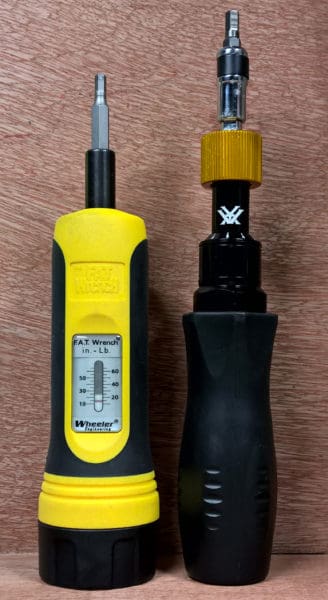
I fondled the wrench in Fred’s shop, but didn’t use it. At home I frequently use the Wheeler F.A.T. Wrench (above, left) and Fix It Sticks Ultimate Kit (not pictured), but I wanted to know how the Vortex stacks up.
The kit comes with six bits, one 1/2″ socket, and a 1/4″ adapter – everything is clearly and conveniently stamped with its size. I also like that Vortex has taken the time to list which bit works with which applicable Vortex product to remove any confusion. Included are:
• 3/16” Hex bit – Fits Vortex Bobro mounts
• 2.5mm Hex bit – Fits Razor Red Dot
• 3mm Hex bit – Fits Hunter rings, CM-202 and CM-203
• T15 Torx bit – Fits Viper rings and Tactical rings
• T25 Torx bit – Fits PMR rings
• 1/2″ Socket – Fits Tactical rings
• 10mm Wide Screwdriver bit – Fits Hunter and Viper clamp bolt
• 1/4″ Socket adapter
The Vortex wrench comes with three fewer bits than the F.A.T. Wrench, but has a better mix of higher-quality Metric and Standard bits. The T15 Torx bit and 1/4″ adapter are the only two common bits across both kits. The good news is that bits are almost literally a dime a dozen, so buying a few to fit your needs shouldn’t be a deterrent – it’s the quality of the wrench that counts.
Just like with the F.A.T. Wrench, Vortex issues a certificate of calibration with each unit. It includes ISO testing standard number, test date, readings, and also notes the serial number of the wrench. When I compared my Wheeler and Vortex cards, I found the Vortex wrench has better test ratings.
The wrench itself begins with a form factor we’re all used to – the ages-old screwdriver handle. After using Wheeler’s awkwardly obese and poorly-balanced F.A.T. Wrench for years, the Vortex wrench immediately felt natural and, quite frankly, was a relief on my wrist. The rubber grip is just about perfect ergonomically.
Adjusting the wrench within its range of 10 inch-pounds to 50 inch-pounds is a snap – and can be done 1 inch-pound at a time. Not many other wrenches will allow such granular adjustment and that feature may be the top reason to consider the Vortex.
To adjust the wrench, simply pull the spring-retained gold ring down, rotate the handle until your desired setting has been reached (as indicated by the intersection of the 1 inch-pound hash mark at the vertical 10 inch-pound line), and release the gold ring into the locked position. The handle rotates very smoothly and provides a subtle indication that can be felt as each 1 inch-pound hash mark crosses the vertical indicator line.
Once set, you can get right to work. When you’ve reached the limit you set, the wrench smoothly transitions off of the torque. There’s no loud “click!” or abrupt “snap!” It’s a smooth “roll over the hill” feeling. By the way, Vortex recommends 15-18 inch-pounds when installing their scope rings.
Some folks prefer to store their wrench in its original container. I prefer Vortex’s tube container over Wheeler’s more standard box. Don’t get me wrong, Wheeler’s container is very nice. It keeps your bits organized and allows one-handed access to the wrench – two things the Vortex container can’t do. But it may as well be the latest memoir from some failed politician because it’s thick, bulky and wastes a lot of space.
Vortex’s tube is more compact, translucent, won’t roll off the table, can be hung from a peg and is less likely to pop open accidentally. It’s also expandable by several inches, allowing room for other items like a cloth, parts, or additional tools. Vortex, like most torque wrench manufacturers, recommends storing the wrench at the lowest inch-pound setting to help retain its calibration.
After using the Vortex Torque Wrench Mounting Kit for the past six weeks, I’m afraid my Wheeler F.A.T. Wrench is destined to be to be forgotten in a drawer somewhere. I simply can’t find a reason not to make Vortex’s wrench my go-to. It’s easier to work with, more precise, has an outstanding warranty, and is highly packable. The Vortex Torque Wrench Mounting Kit is a top-notch tool fit for any firearms owner’s workbench or range bag.
Specifications: Vortex Torque Wrench Mounting Kit
Price as reviewed: $89.99 MSRP (under $70 shipped on Amazon)
Ratings (out of five stars):
Design: * * * * *
This wrench is designed to work just like a screwdriver. It is well balanced and the rubberized handle makes it very easy to grip and control. Adjusting the wrench is easy and smooth; the locking ring is equally pleasant to engage.
Completeness of Kit: * * * *
The kit includes everything you’ll need for just about any Vortex optic, set of rings, or mount. The bits are a nice mix of Standard and Metric sizes, but you may need to add a few bits to cover all of you bases. The wrench’s case is nice and compact, yet it allows for some expansion to fit other items. Unfortunately, it does not have a specific area to retain bits.
Bit Fit & Torque Limiter Capability: * * * *
The included bits are a little looser than I’d like to see when installed. I like the 10 inch-pound to 50 inch-pound range this wrench provides. There aren’t many applications that require a torque setting greater than 45 inch-pounds.
Durability: * * * * *
No issues thus far and all bits are holding-up very well.
Overall: * * * * *
The Vortex Torque Wrench Mounting Kit is a step-up from the norm. It takes back a form factor that has, and always will, work well. The 1 inch-pound increments within a well-suited torque range provide the accuracy we all want in a tool. A torque wrench is an investment and Vortex’s Torque Wrench Mounting Kit is worth putting your money into.


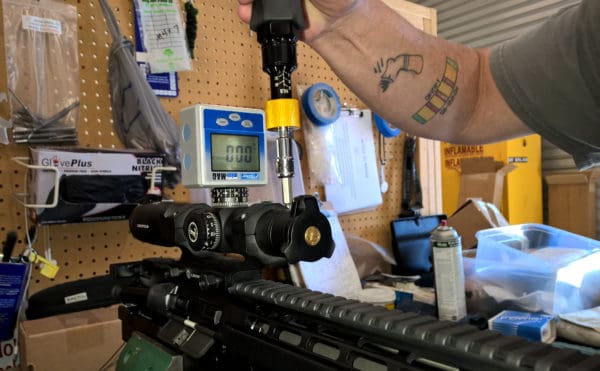
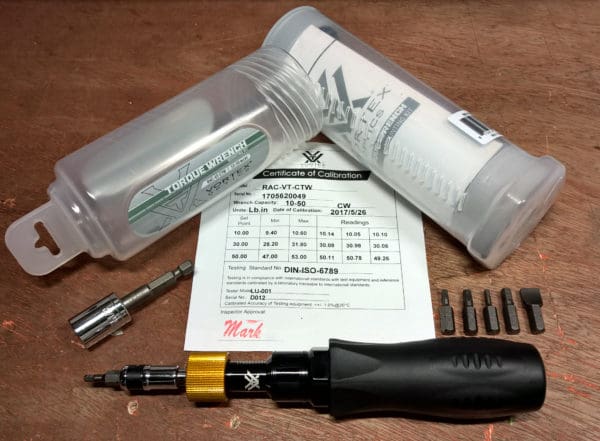
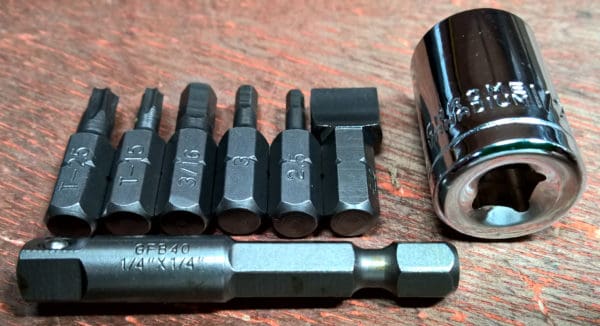
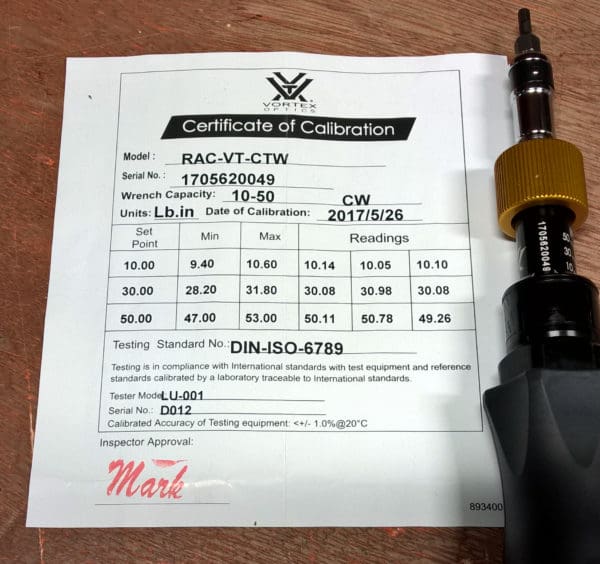
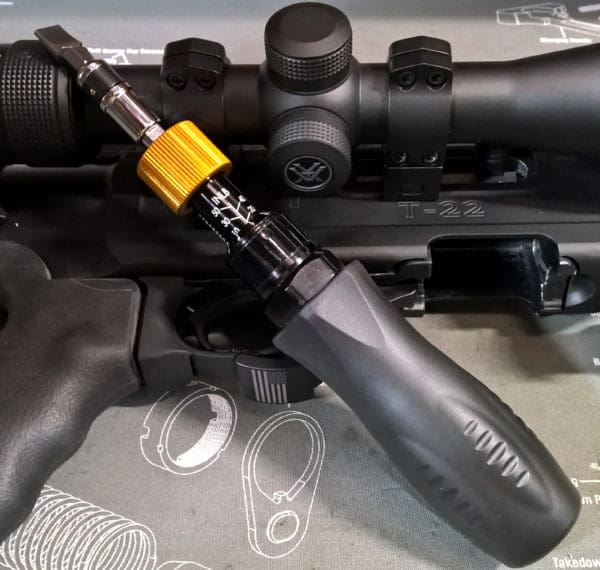
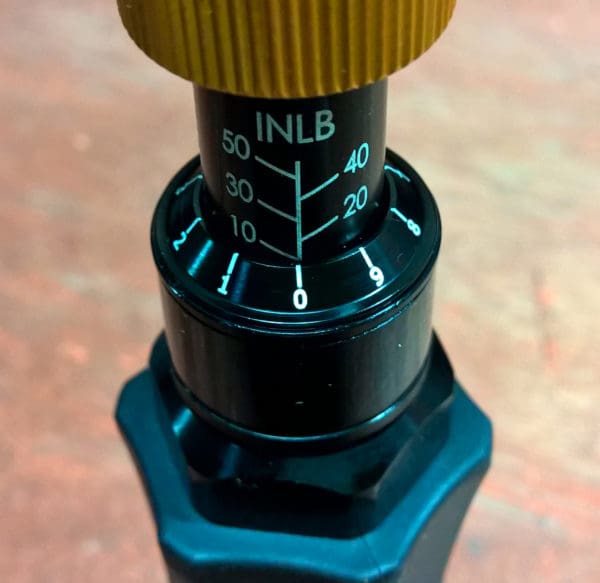
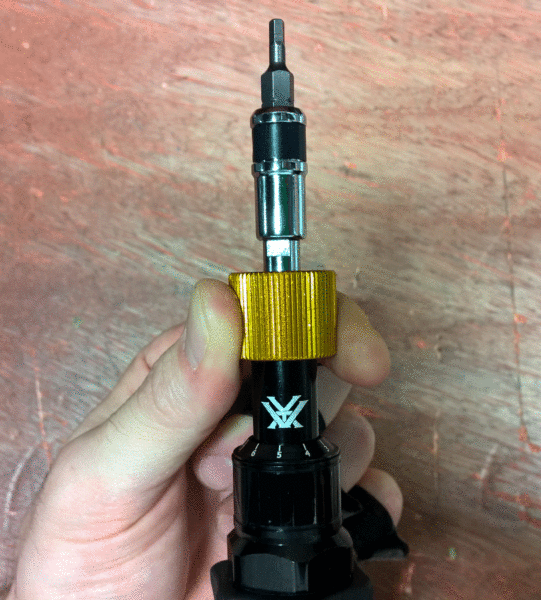
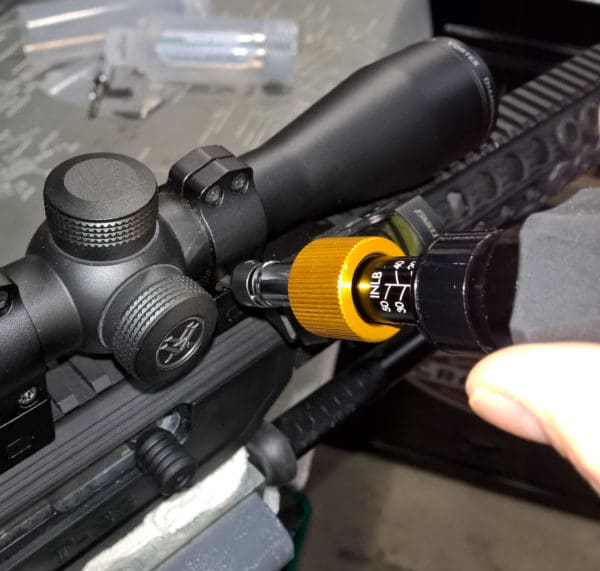
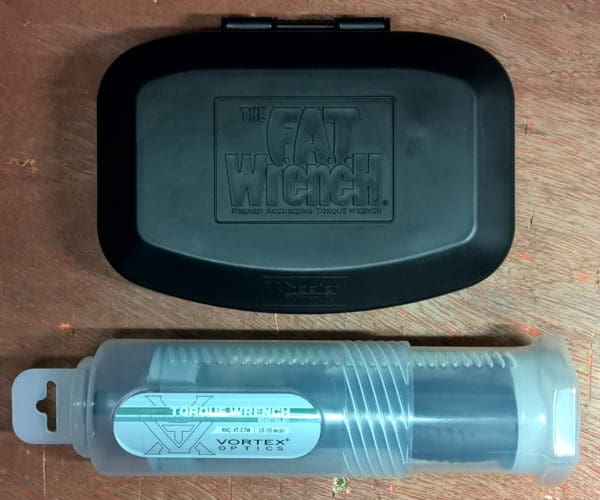
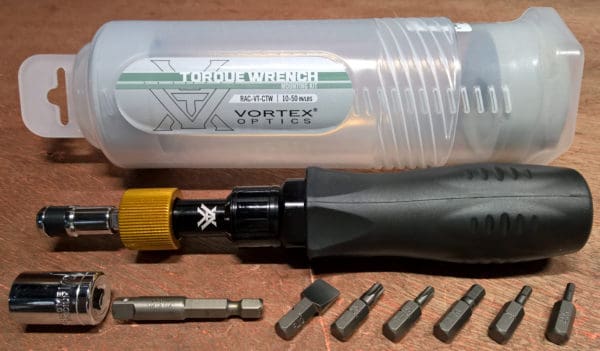
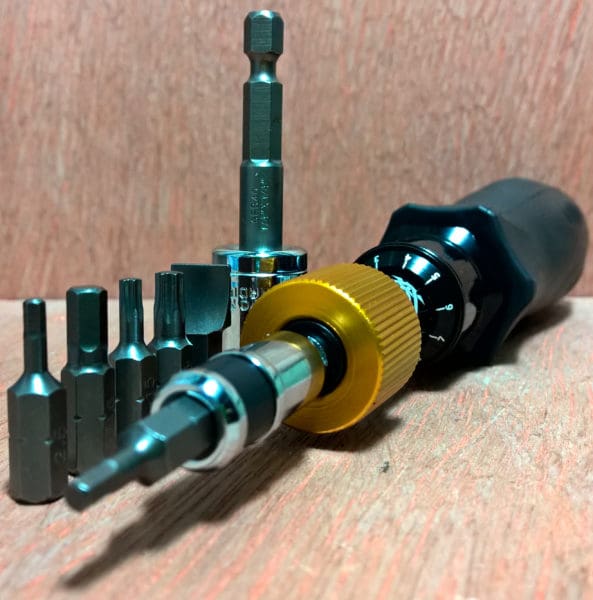



I call dibs on your Fat Wrench. I’ll pay the postage.
Dang it! Beat me to it.
LOL Doesn’t hurt to ask! But I will be keeping the F.A.T. around as a secondary/back-up for when one of my buddies “borrows” the Vortex without my knowing 😉
If you’re serious I have a wheeler scope mounting kit (includes FAT wrench) I might be looking to sell.
[email protected]
Message sent
Inch pound torque wrenches are nice. I have a Snap-On one I just used on a Holley Carburetor float bowl bolts which are a 12X24 and torqued to 40 inch pounds. That’s just about the minimum adjustment though so going lower would be really nice on specific applications.
nice wrench, for torque values and prevention of stripping of thds.
Very nice. Unfortunately for me, I already have a Fat Wrench and don’t see enough of a performance difference to make it worth the upgrade.
Kinda wish I did… Maybe for Christmas.
Sorry noob question… how important is it to use these? I just torque it as hard as I can by hand (I don’t put my whole arm into it). Is there a big difference? I’m thinking no, because in any case you still need to zero your scope. Please educate me.
Fair question and thank you for asking, Badwolf.
Some torque specs are more important than others (ex. castle nut vs. scope rings) and I’ve seen many gunsmiths pick and choose when they tighten to spec (I don’t necessarily agree with their approach, however).
That said, specs are there for a reason; they tell the user how to install the unit so that it will perform optimally. Will most things perform if they are not mounted to spec? Probably. Will they perform well? Maybe. Will they perform well for a long period of time? Most likely not.
Take scope rings for example. Too loose and the screws back-out, leading the scope to break zero and possibly the loss of a screw or two. Too tight and you run the risk of stripping threads and/or crushing part of the scope. The spec is that happy medium where you are least likely to encounter an unwanted result.
It only takes one instance of stripping threads on a $200 scope mount or crushing a 1″ scope tube to learn the value of torquing to spec. Many people are fortunate to have a good enough “feel” that they never encounter those types of issues. They are lucky.
One final word on the matter, if you’re not tightening to spec, it is a good idea to actively check those fittings to ensure they remain tight. Hope this helps!
Got it! Thanks for the info Connor, Jeremy, Trout. Ordering one soon.
So many guns and gun accessories right now have steel bolts threading into aluminum parts. It’s really easy to strip these! Tighten to spec. Plus what Conner mentioned about squishing scope tubes. It’s well worth the investment for a decent little torque wrench like this Vortex one. If the budget is tighter, the FAT Wrench discussed in the review runs $45 shipped on Amazon: http://amzn.to/2wIrUop. Though the Vortex one is under $70 (http://amzn.to/2xSjjVz) and, from the sounds of it, probably is worth the extra bucks.
An in/lb torque wrench is also handy for tightening the action screws on a rifle if you need to disassemble it. Tightening to a different torque can affect accuracy and change point of aim.
The guys over at CAR & Hyperion are great .
Nothing against wheeler, but I have fat wrench and two Seekonik wrenches (0-30 in./lbs. and 0-75) and the Seekoniks agree with each other and seriously disagree with the Wheeler. That, plus the fact that the Seekoniks cost 2x + means I tend to trust them and I just don’t use the Wheeler. The Vortex, if accurate, would be a lot more convenient. Seekonik also makes instruments for testing torque wrenches, but the one I just glanced at was over $300.
You sound like the NASA engineers who designed the Hubble telescope.
The more expensive instrument said the mirror was fine, so they disregarded the reading on the cheaper one……..guess what happened………
Lesson: Just because you pay more, doesn’t mean you get more. Wine & cars are great examples of this. There are some great cheap wines, and most BMWs have GM transmissions.
a little pricey but definitely sounds awesome. im sure i won’t be dissatisfied!
Ironically, the last time I used my F.A.T. wrench was to mount a Vortex Crossfire II last spring. Looks like they might be on to something. No more than I use it though, I’ve been quite satisfied with the Wheeler wrench.
In my youth I was a tool freak, I would have to have one of these. Seems very cool. Today I’m afraid I’d just lose it.
Before you run out and buy one of these you owe it to yourself to see what Wiha has to offer with their TorqueVario series of tools and kits. Note, however, that they aren’t likely to be as inexpensive as the product reviewed here.
We use Wiha in the shop. Their bits are kind of brittle. I go through T3 bits like crazy.
One reviewer on amazon commented on the 50 in-lb limit to this tool and pointed out several instances where higher torque is required (I quote below) –
The second is that it’s limited in its upper torque at only 50 in/lbs and many of the heavier duty scope mounts recommend 65+ in/lbs for their cross bolt torque. For example Badger mounts suggest 65 in/lbs on their cross bolts, Nightforce is 68 in/lbs on normal rings, and 100 in/lbs on their 6 screw 34mm rings, Warne Xskel mounts are 65 in/lbs, Burris tactical mounts are 65 in/lbs. So for those mounts this unit is worthless and you need something with a higher torque limit. In addition many rifles suggest action screw torque values from 60-100+ in/lbs.